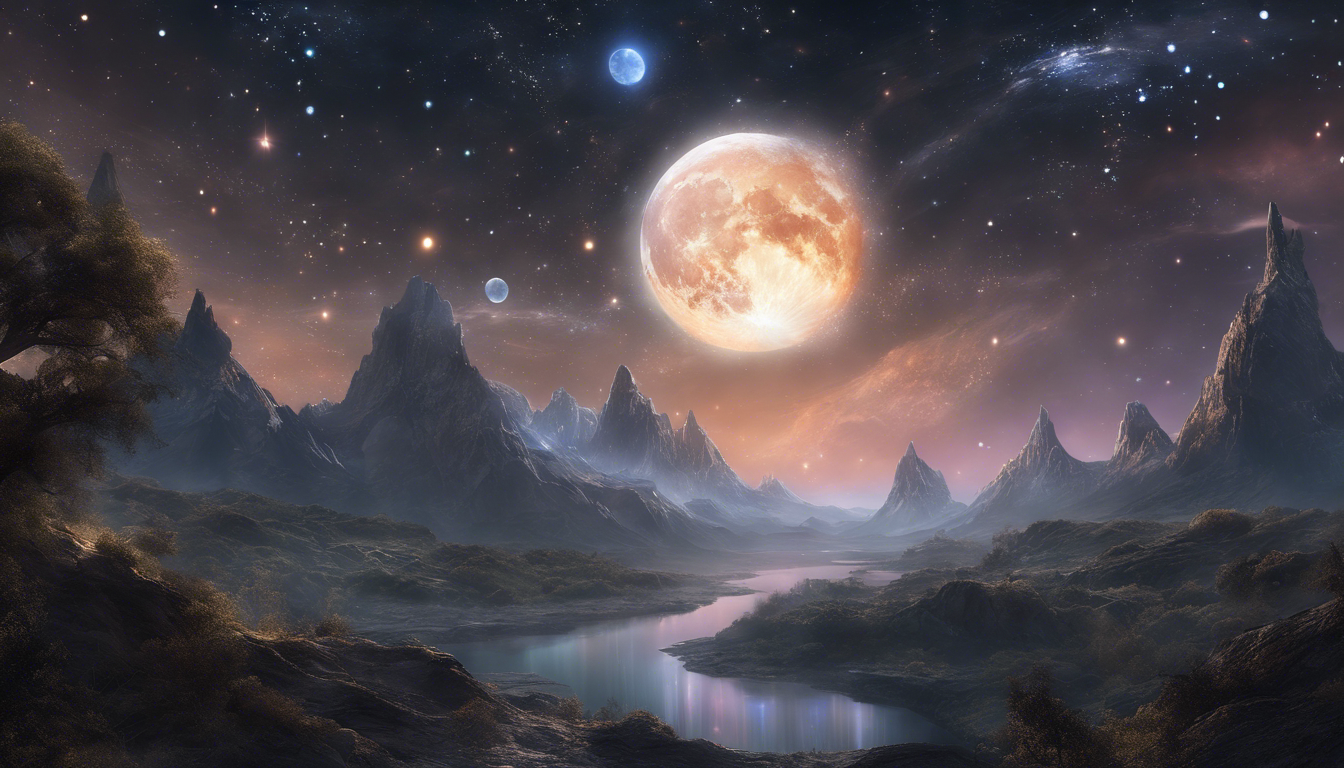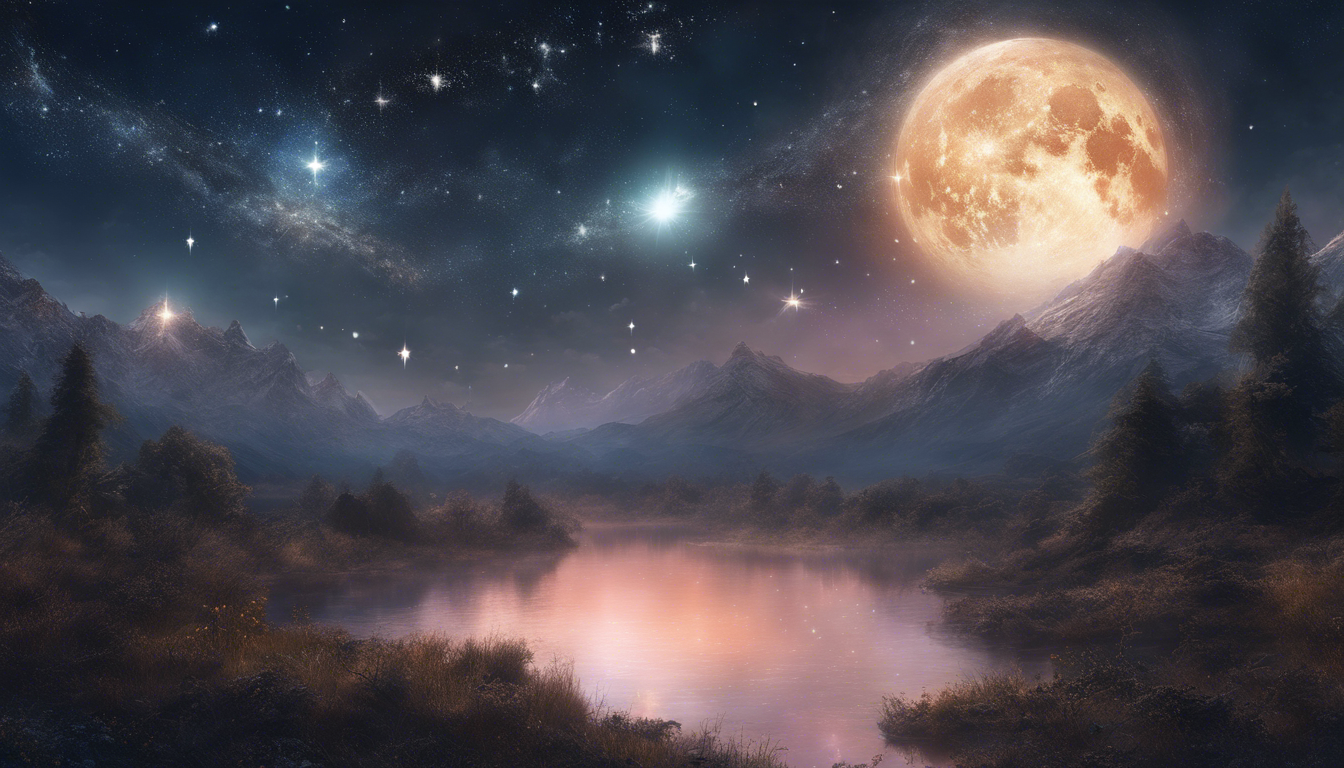Stargazing Through the Ages
The Ancient Wisdom of Stargazing
Throughout history, stargazing has been a source of fascination and spiritual connection for civilizations around the world. Ancient cultures such as the Babylonians, Egyptians, and Mayans looked to the stars for guidance, believing that celestial bodies held great significance in shaping human destiny. Stargazing was not only a tool for navigation and timekeeping but also a way to explore the mysteries of the universe.
The Renaissance of Astronomy
During the Renaissance period, stargazing evolved from a mystical practice to a scientific endeavor. Pioneers like Galileo Galilei and Johannes Kepler revolutionized our understanding of the cosmos through observations and mathematical theories. The invention of the telescope further expanded our view of the heavens, revealing the beauty and complexity of celestial objects like never before.
Modern Stargazing Techniques
In the modern era, stargazing has become more accessible than ever thanks to technological advancements. Telescopes, observatories, and space missions have allowed astronomers to study distant galaxies, exoplanets, and black holes with unprecedented detail. Amateur astronomers also contribute to the field, capturing stunning images of the night sky and sharing their passion for astronomy with the world.
The Future of Stargazing
As we look to the future, stargazing continues to inspire wonder and curiosity. With ongoing scientific research and exploration of space, we are constantly uncovering new mysteries of the universe and pushing the boundaries of our knowledge. Whether through educational programs, virtual stargazing events, or individual starlit quests, the tradition of observing the night sky remains a timeless pursuit that connects us to the vastness of the cosmos.
The Influence of Stars on Earth

Stars have long held a profound influence on Earth, shaping not only our understanding of the universe but also impacting various aspects of our planet’s existence. From ancient civilizations to modern astronomers, the study of stars, galaxies, and celestial bodies has provided invaluable insights into the mysteries of the cosmos.
The Impact of Stars on Earth’s Climate
Stars play a crucial role in determining Earth’s climate through their energy output and radiation. The Sun, our closest star, provides the energy necessary to sustain life on our planet. Solar radiation drives weather patterns, ocean currents, and the processes that regulate temperatures on Earth. Variations in solar activity can influence long-term climate changes, such as ice ages and warming trends.
Stellar Evolution and Earth’s Origins
The life cycle of stars offers valuable insights into Earth’s formation and evolution. Stellar remnants from ancient supernovae contributed to the formation of our solar system, enriching Earth with essential elements like carbon, oxygen, and iron. Understanding how stars evolve and produce elements through nucleosynthesis helps scientists unravel the origins of our planet and its composition.
Navigation and Cultural Significance
Throughout history, stars have served as navigational guides for sailors, explorers, and travelers. Constellations like the Big Dipper and Orion not only helped ancient civilizations navigate the seas but also played a central role in cultural beliefs and mythologies. The study of stars in astronomy has deepened our understanding of different cultures and their celestial connections.
Astrological Impact and Mythological Interpretations
Astrology, the belief that celestial bodies influence human affairs, is deeply rooted in ancient traditions and continues to shape popular culture today. The alignment of stars and planets at the time of one’s birth is thought to influence personality traits and life events. Mythological interpretations of stars and constellations further highlight the enduring impact of celestial bodies on human imagination and storytelling.
In conclusion, the influence of stars on Earth extends far beyond their distant glow in the night sky. From shaping our climate to guiding explorers and inspiring cultural practices, stars have left an indelible mark on our planet’s history and continue to captivate our curiosity in the field of astronomy.
Exploring the Mysteries of the Moon

The Celestial Beauty
The Moon, Earth’s natural satellite, has captivated human imagination for centuries. Its luminous presence in the night sky has inspired myths, legends, and scientific explorations. But beyond its serene beauty lies a realm of mysteries waiting to be uncovered.
The Lunar Landscape
As we gaze upon the Moon from afar, its surface appears barren and desolate. Yet, a closer look reveals a complex terrain marked by craters, mountains, and vast plains. Understanding the geology of the Moon is essential in unraveling its mysteries.
The Ties to Earth
Despite its distant appearance, the Moon exerts a powerful influence on our planet. Its gravitational pull causes tides in the oceans and affects Earth’s rotation. Lunar phases have also been linked to human behaviors and cultural beliefs throughout history.
The Unanswered Questions
Scientists continue to probe the secrets of the Moon, seeking answers to questions that have puzzled humanity for ages. What lies hidden beneath its surface? How did it come to be Earth’s companion? Exploring these enigmas pushes the boundaries of our knowledge of the universe.
Astronomy’s Role in Understanding the Universe

Astronomy, the study of celestial objects and phenomena beyond the Earth’s atmosphere, plays a crucial role in expanding our understanding of the vast and complex universe we exist in. Through observation, analysis, and theoretical modeling, astronomers shed light on the origins, evolution, and mysteries of the cosmos.
Exploring the Cosmos
Astronomy provides a window into the universe, allowing us to explore phenomena such as stars, planets, galaxies, and black holes. By observing these celestial bodies across different wavelengths of light, astronomers gain insights into their composition, behavior, and interactions.
Unraveling the Origins of the Universe
One of the primary goals of astronomy is to unravel the origins of the universe. Through studying the cosmic microwave background radiation, the distribution of galaxies, and the formation of structures in the universe, astronomers piece together the timeline of the universe’s birth and evolution.
Understanding Dark Matter and Dark Energy
The universe’s composition is a puzzle with missing pieces known as dark matter and dark energy. Astronomy plays a key role in studying these enigmatic components by observing their gravitational effects on visible matter and the expansion of the universe, contributing to our understanding of the universe’s composition and structure.
Searching for Exoplanets and Habitability
With the discovery of thousands of exoplanets orbiting distant stars, astronomy contributes to the search for potential habitable worlds beyond our solar system. By analyzing exoplanet atmospheres and conditions, astronomers assess the possibility of life elsewhere in the universe.
Collaborations with Other Fields
Astronomy collaborates with various scientific disciplines, including physics, chemistry, and astrophysics, to deepen our understanding of the universe. Interdisciplinary research and technological advancements enable astronomers to explore new frontiers and tackle complex questions about the cosmos.


Article written by Dera
Greetings, I am Dera, a 35-year-old individual with a deep passion for spirituality. Through my website, I aim to share my insights and knowledge to help others on their spiritual journey. Join me on the path to inner peace and enlightenment.